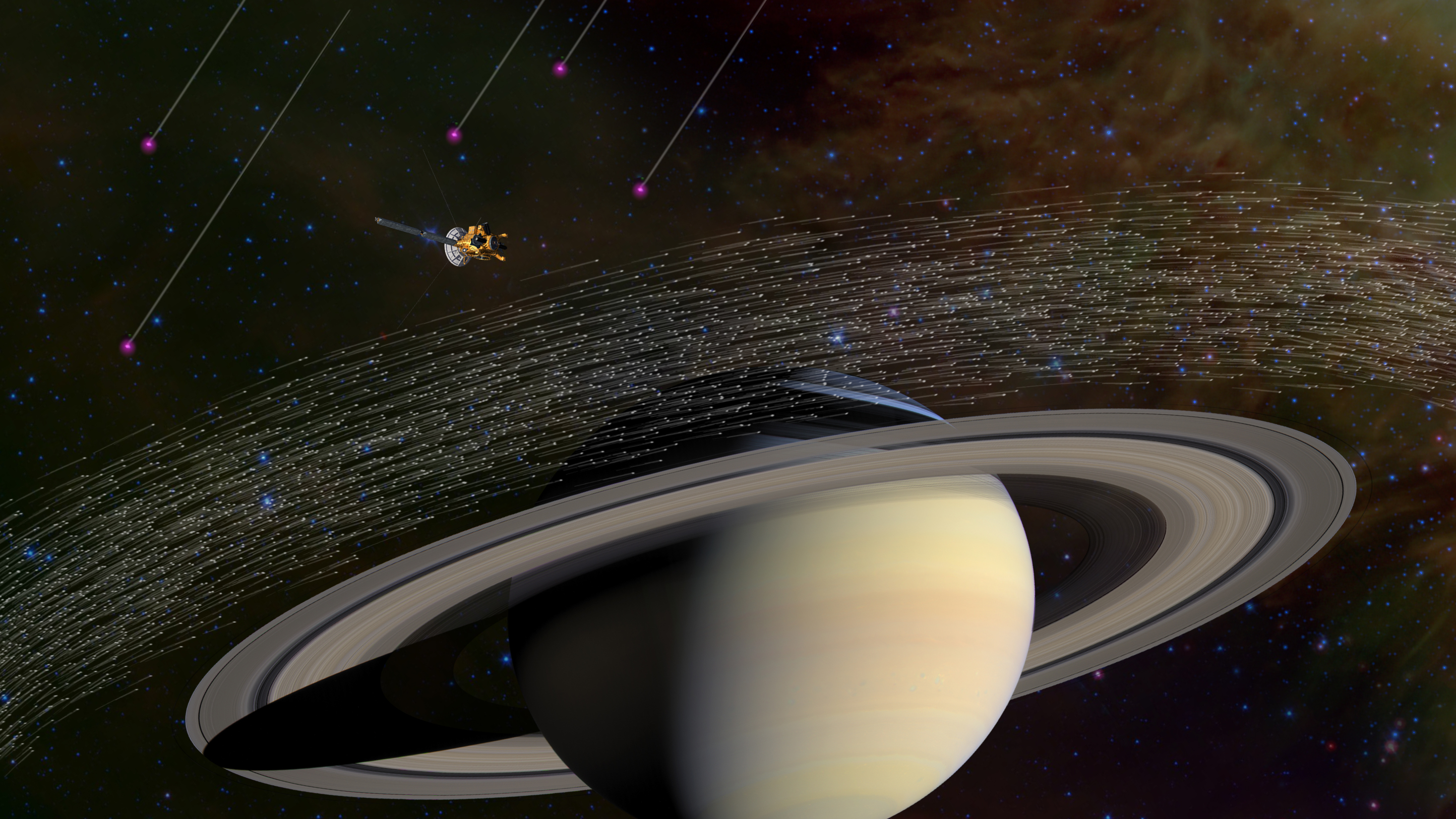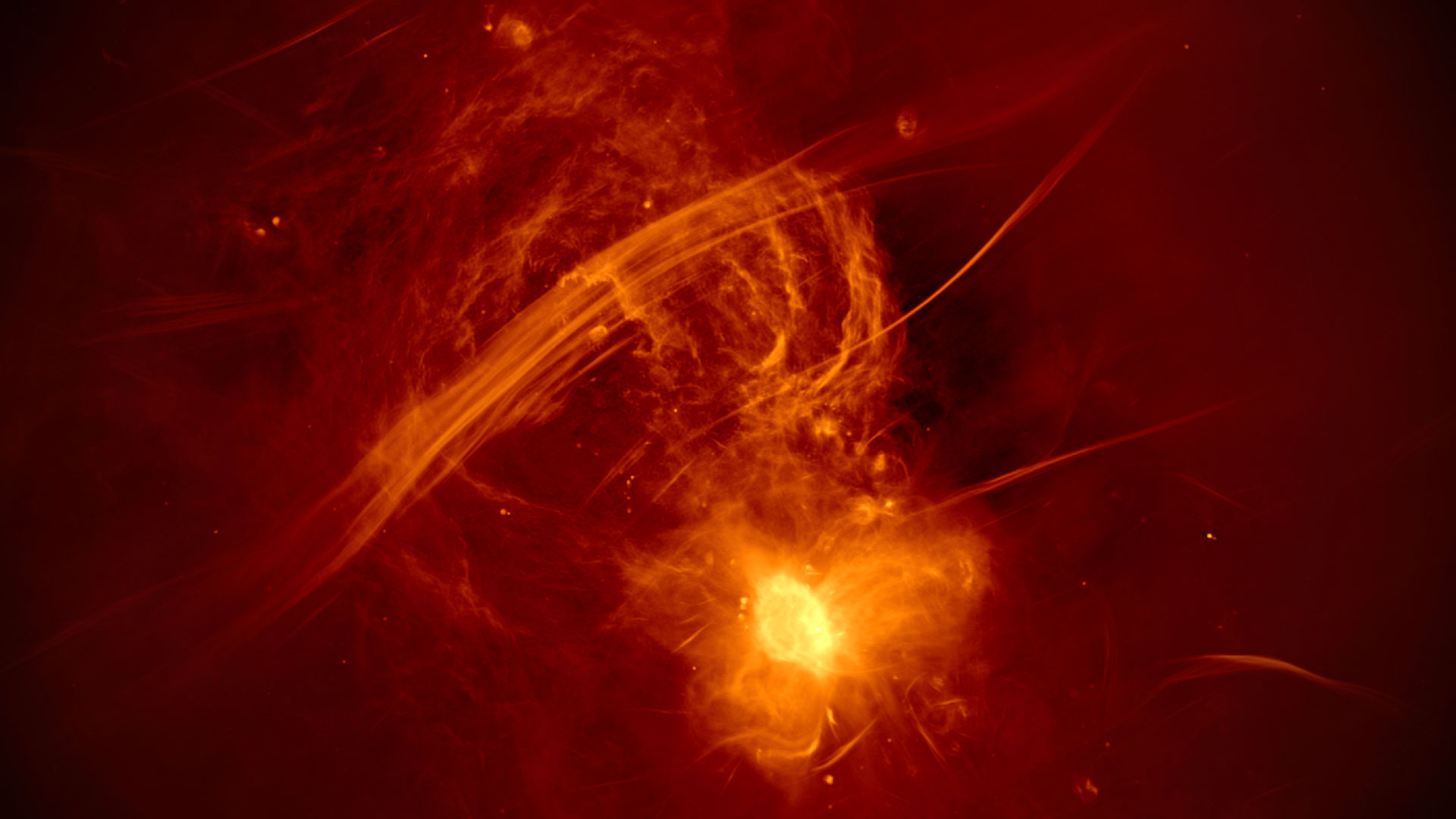HR 6819, a highly intriguing object that was recently proposed as a multiple system containing a stellar-mass black hole, is in fact a binary star system in a rare and short-lived stage of its evolution, according to a research team led by KU Leuven astronomer Abigail Frost.
An artist’s impression of HR 6819, a close binary consisting of a stripped B-type star (background) and a rapidly rotating Be star (foreground). Image credit: ESO / L. Calçada.
HR 6819, also known as HD 167128, ALS 15056 or QV Tel, is a naked-eye stellar system located 1,119 light-years away in the constellation of Telescopium.
In 2020, ESO astronomer Thomas Rivinius and colleagues determined HR 6819 to be a hierarchical triple, with a distant classical Be-type star orbiting a short-period inner binary consisting of a B3 star and a quiescent stellar-mass black hole in a close circular orbit.
But a study led by KU Leuven researcher Julia Bodensteiner proposed a different explanation for the same data: HR 6819 could also be a system with only two stars on a 40-day orbit and no black hole at all.
This alternative scenario would require one of the stars to be ‘stripped,’ meaning that, at an earlier time, it had lost a large fraction of its mass to the other star.
“We had reached the limit of the existing data, so we had to turn to a different observational strategy to decide between the two scenarios proposed by the two teams,” said Dr. Frost, lead author of the new study.
“The scenarios we were looking for were rather clear, very different and easily distinguishable with the right instrument,” Dr. Rivinius said.
“We agreed that there were two sources of light in the system, so the question was whether they orbit each other closely, as in the stripped-star scenario, or are far apart from each other, as in the black hole scenario.”
To distinguish between the two scenarios, Dr. Frost and co-authors used the Multi Unit Spectroscopic Explorer (MUSE) instrument on ESO’s Very Large Telescope (VLT) and the GRAVITY instrument on ESO’s Very Large Telescope Interferometer (VLTI).
“MUSE confirmed that there was no bright companion in a wider orbit, while GRAVITY’s high spatial resolution was able to resolve two bright sources separated by only one-third of the distance between the Earth and the Sun,” Dr. Frost said.
“These data proved to be the final piece of the puzzle, and allowed us to conclude that HR 6819 is a binary system with no black hole.”
“Our best interpretation so far is that we caught this binary system in a moment shortly after one of the stars had sucked the atmosphere off its companion star,” Dr. Bodensteiner added.
“This is a common phenomenon in close binary systems, sometimes referred to as ‘stellar vampirism’ in the press. While the donor star was stripped of some of its material, the recipient star began to spin more rapidly.”
“Catching such a post-interaction phase is extremely difficult as it is so short,” Dr. Frost said.
“This makes our findings for HR 6819 very exciting, as it presents a perfect candidate to study how this vampirism affects the evolution of massive stars, and in turn the formation of their associated phenomena including gravitational waves and violent supernova explosions.”
The study was published in the journal Astronomy & Astrophysics.
_____
A.J. Frost et al. 2022. HR 6819 is a binary system with no black hole. Revisiting the source with infrared interferometry and optical integral field spectroscopy. A&A 659, L3; doi: 10.1051/0004-6361/202143004
Note: This article have been indexed to our site. We do not claim legitimacy, ownership or copyright of any of the content above. To see the article at original source Click Here














